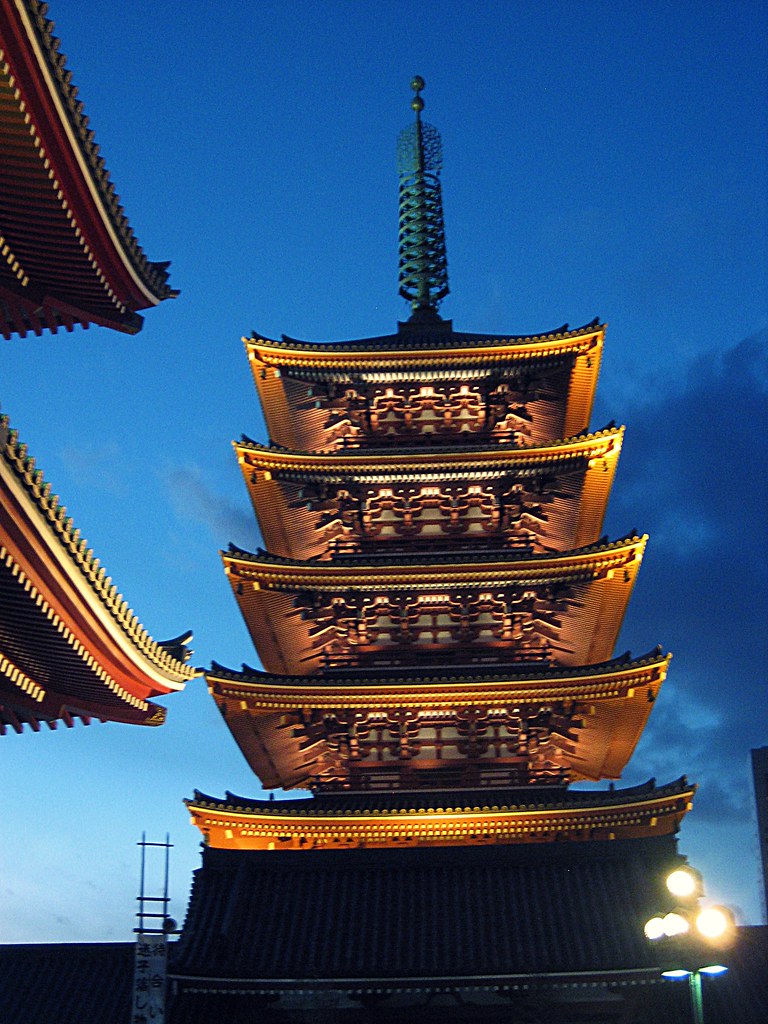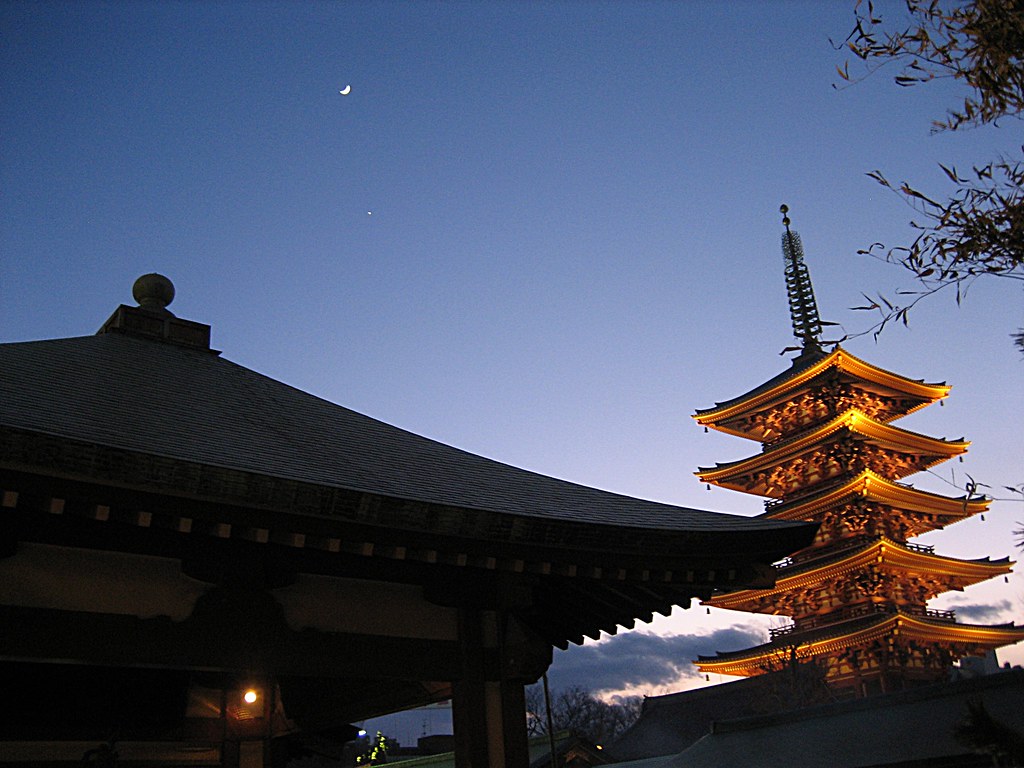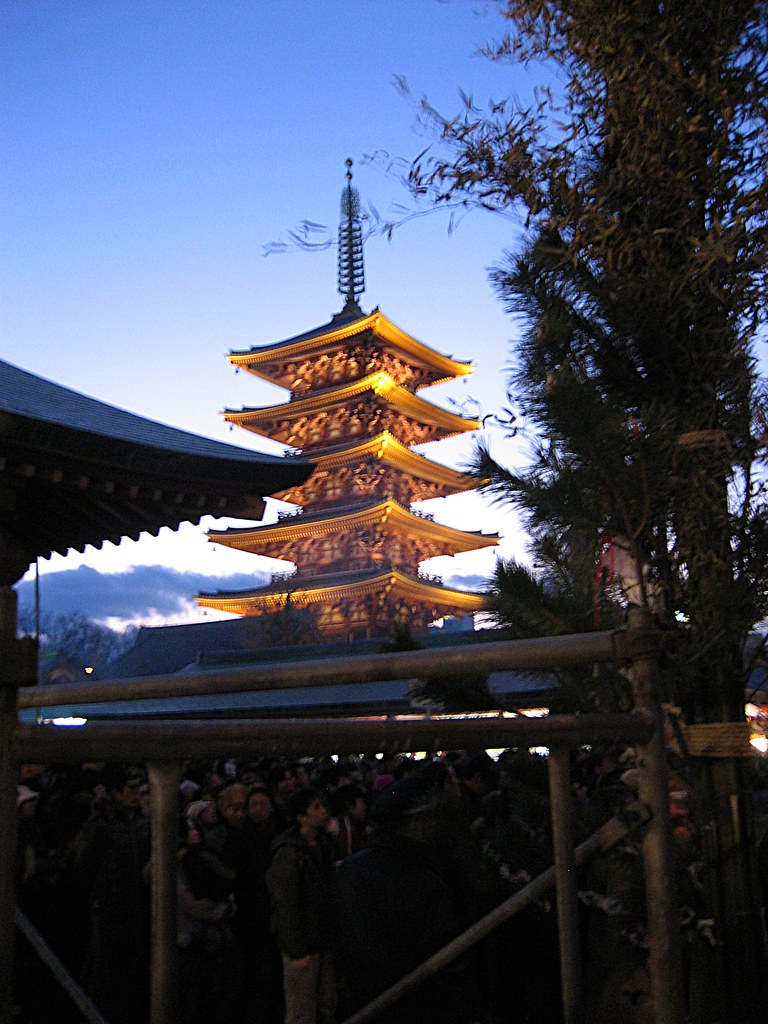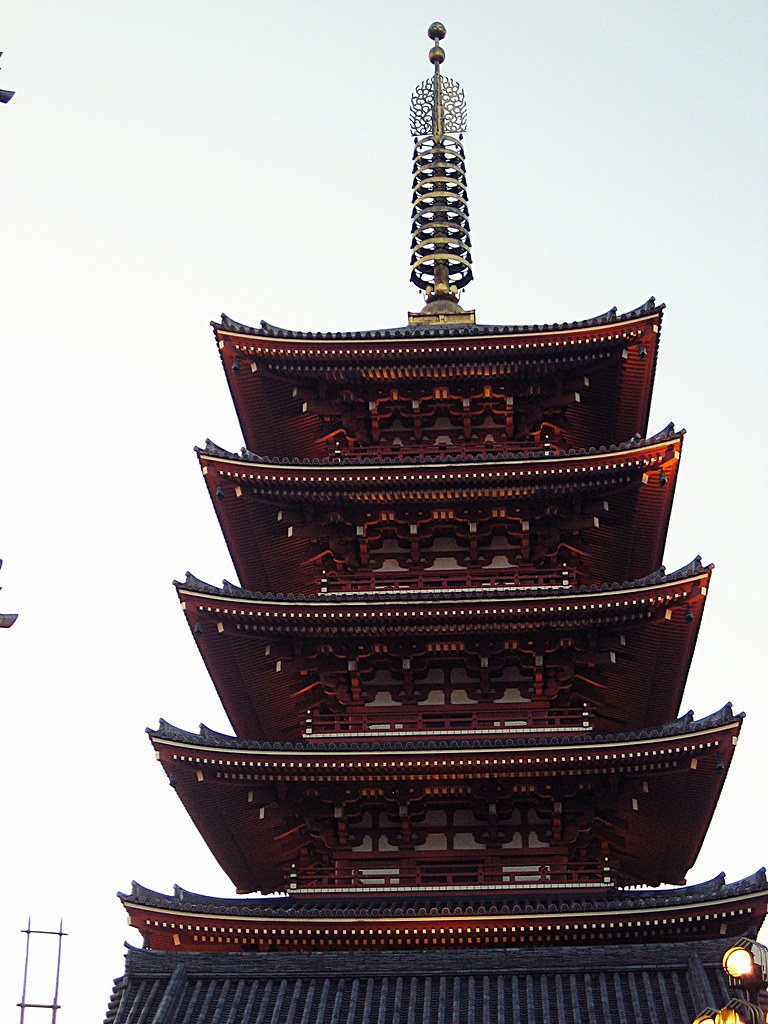skip to main |
skip to sidebar

When approaching the temple, visitors first enter through the Kaminarimon (Thunder Gate), the outer gate of the Sensoji and symbol of Asakusa.
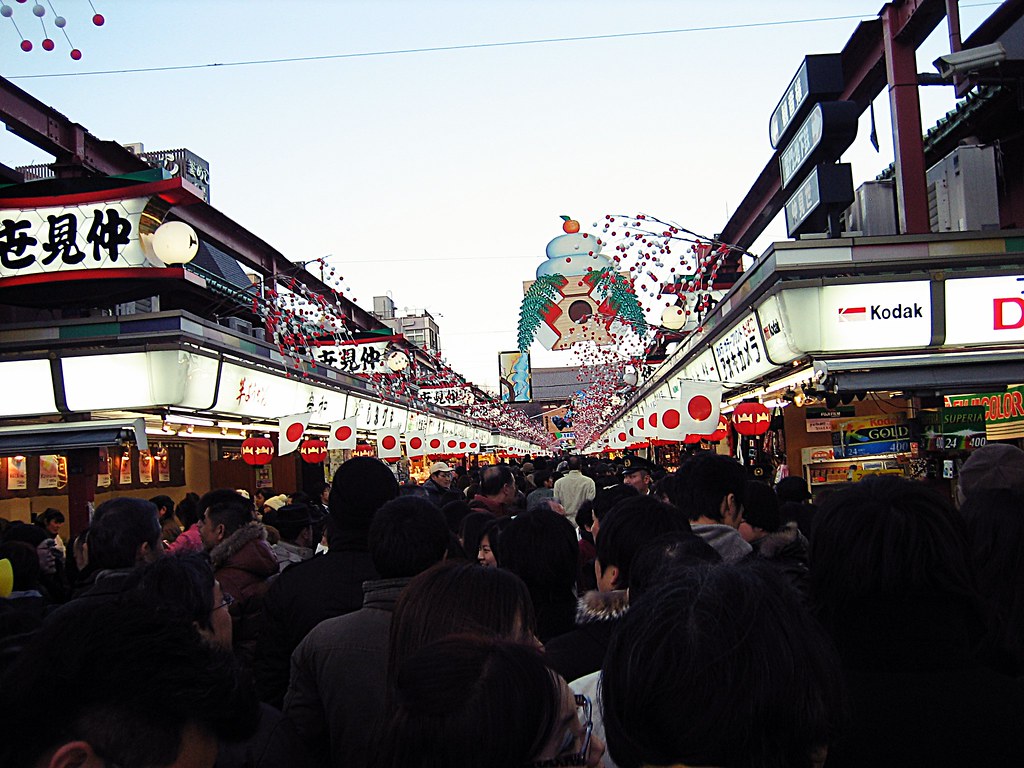
A shopping street of over 200 meters, called Nakamise, leads from the outer gate to the temple's second gate, the Hozomon. Besides typical Japanese souvenirs such as yukata and folding fans, various traditional local snacks from the Asakusa area are sold along the Nakamise.
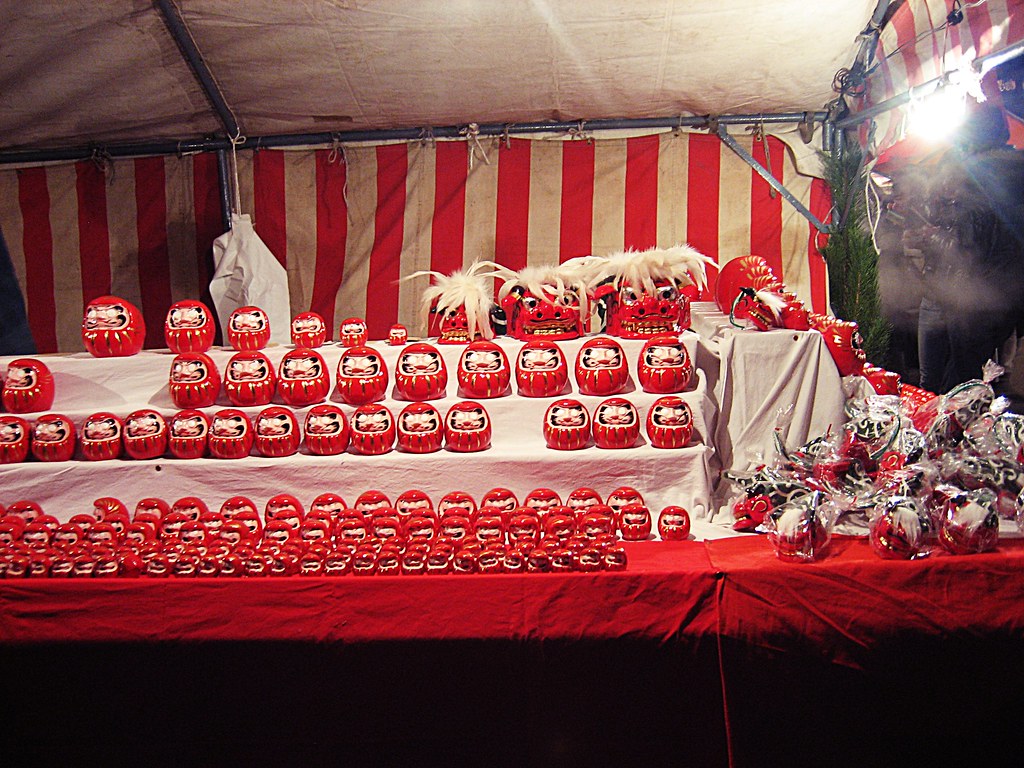
The shopping street has a history of several centuries.
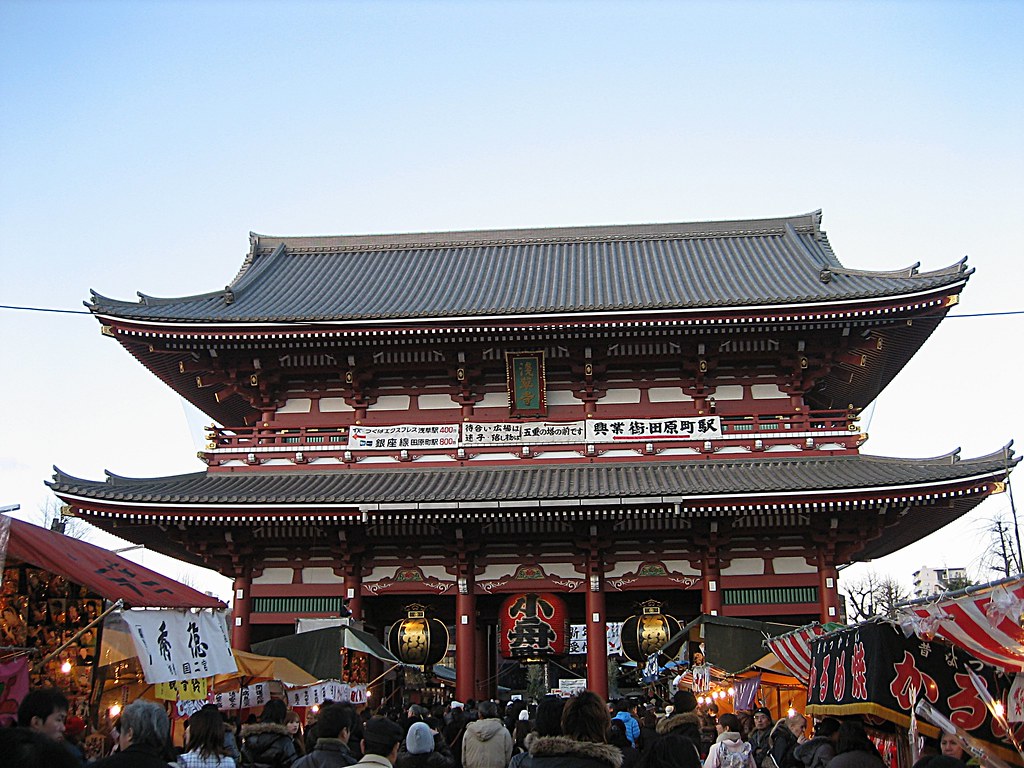
Hozomon, the main gate.
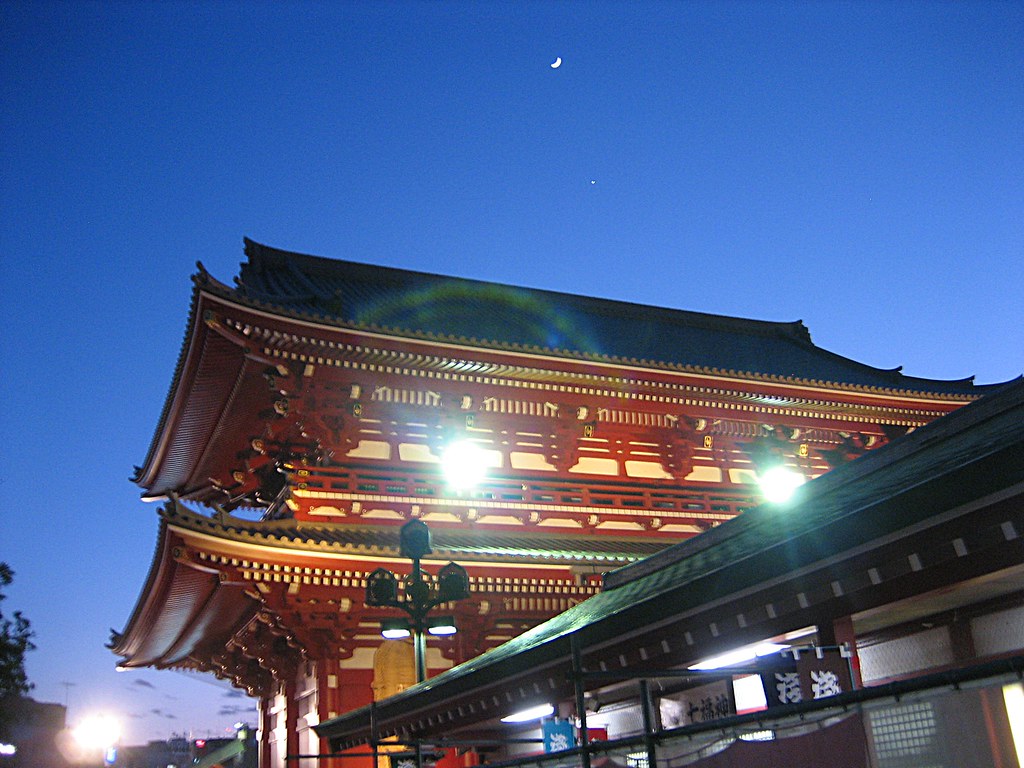
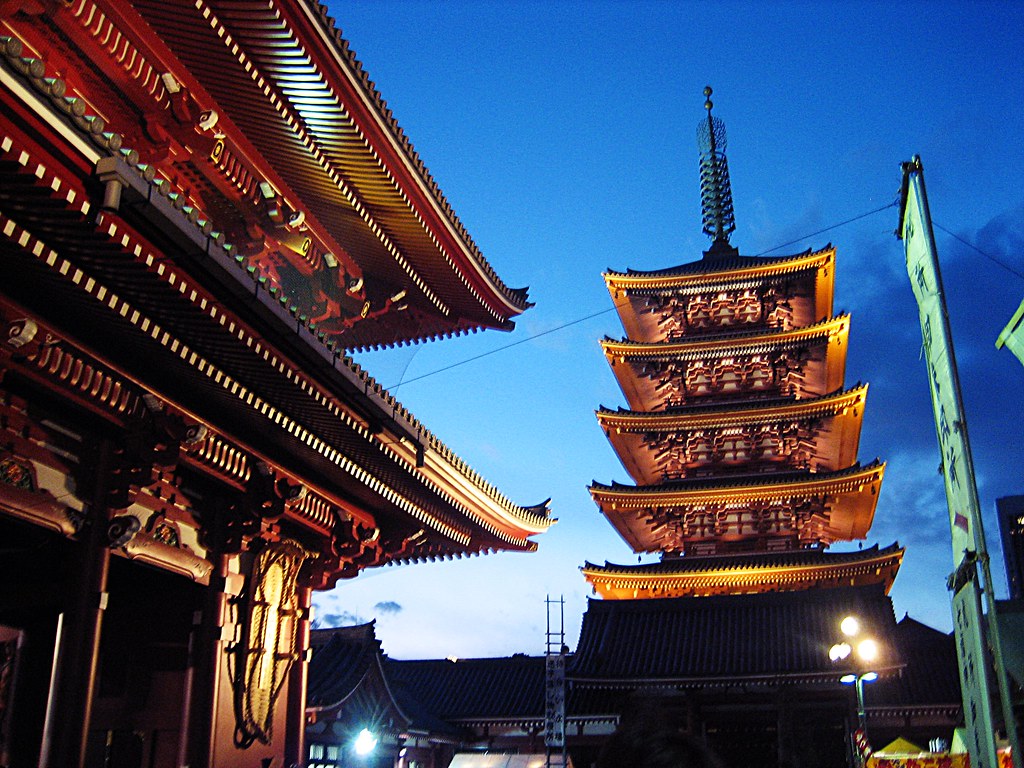
Beyond the Hozomon main gate stands the temple's main building and a five storied pagoda (more photos of Pagoda in next post).
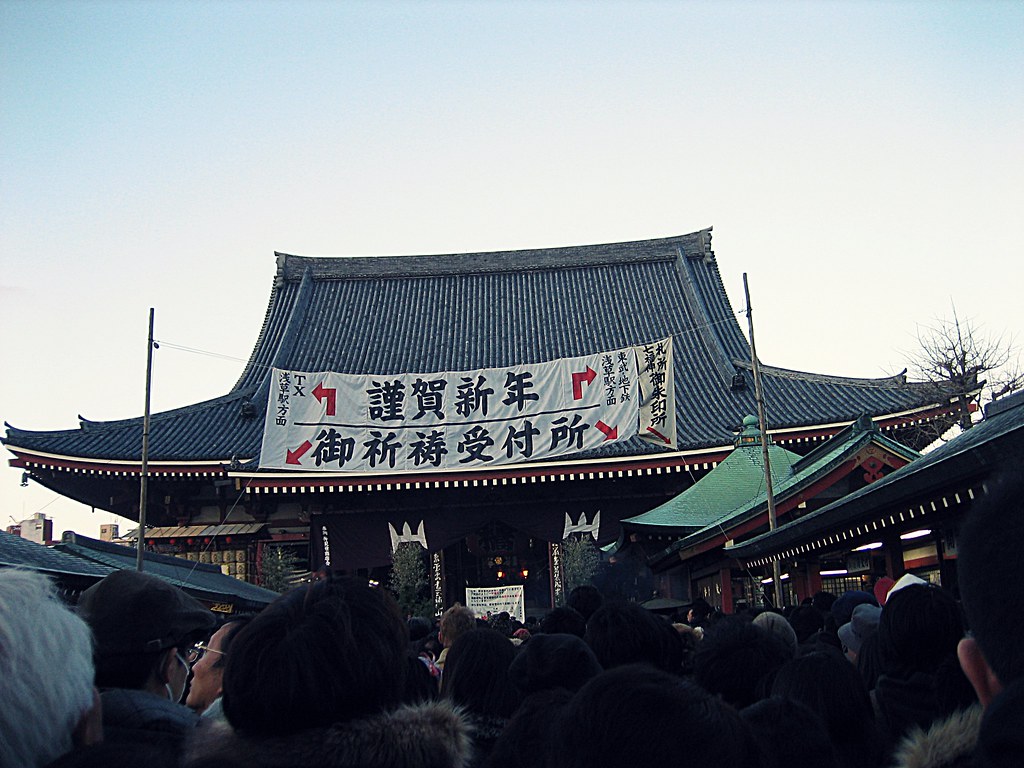
Sensoji main building for the goddess of mercy. The legend says that in the year 628, two brothers fished a statue of Kannon, the goddess of mercy, out of the Sumida River, and even though they put the statue back into the river, it always returned to them. Consequently, Sensoji was built there for the goddess of Kannon. The temple was completed in 645, making it Tokyo's oldest temple.
Read more

